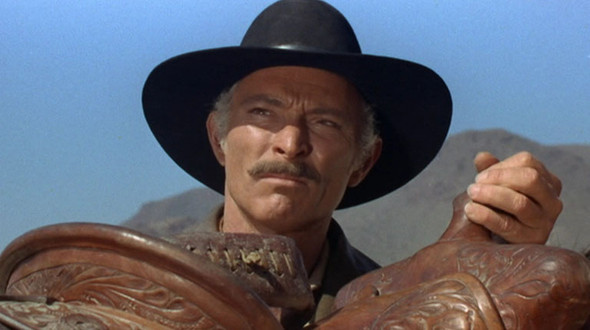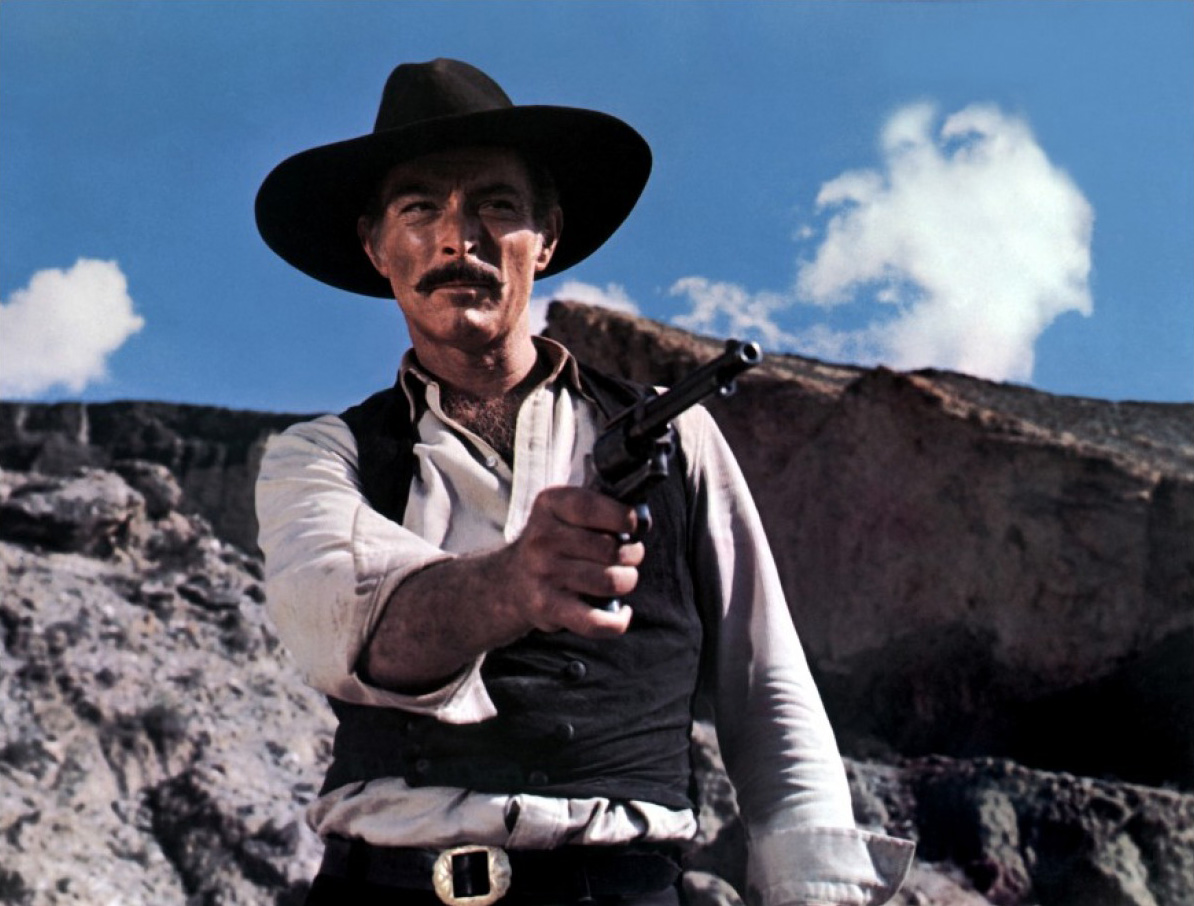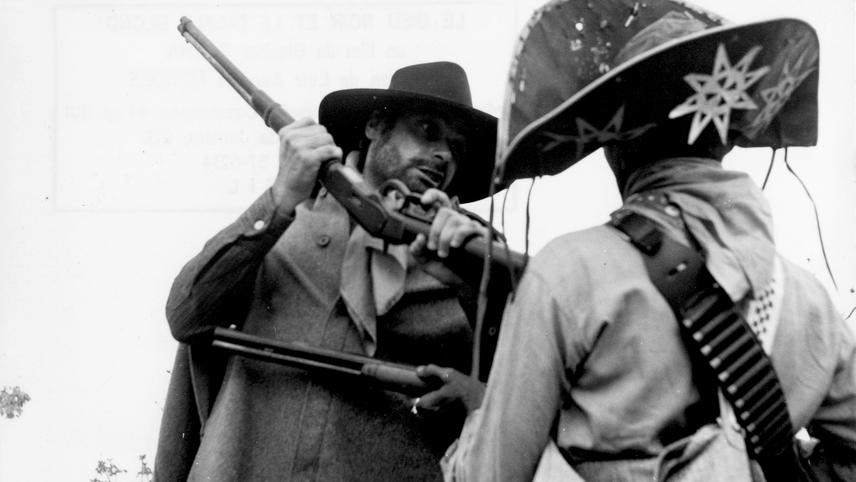5. Lemonade Joe (1964)

To not let the list be heavy on the drama, it’s time for laughs. “Lemonade Joe” is an Ostern film, more specifically a red western. If you have no idea what these terms mean, “Osterns” were a variation of Western films made in the USSR or the Eastern bloc in general. This Czechoslovak film fits into the sub-genre/connected genre of “red western”s which is set in America’s “Wild West” but involves much different themes and interpretations than traditional American westerns.
“Lemonade Joe” is a silly, unusual musical parody of American westerns set in a town in Arizona. Everybody drinks all the time, and then Lemonade Joe shows up. He wants to introduce them to “Kolaloka”, a non-alcoholic soft drink, and thanks to his gunfighting skills, everybody is easily convinced. However, things soon will get violent… in a cartoonish way, obviously. As you can figure out from the plot, it’s not just a parody of Western clichés but also a satire on commercialism and capitalism. There are even some jabs at racism and sexism as well. Some of the stylistic choices also remind of the silent western era and there are lot of camera work. If you want to watch something as amusing but also different than “Blazing Saddles”, then this one might be a good choice.
4. Death Rides a Horse (1967)

As a child, Bill Maceita survives the massacre of his family by a gang of four because an unknown man takes him out of the burning house. 15 years later, Bill has grown into a young man and a skilled gunfighter, but still inexperienced. He meets the former bandit Ryan, who was betrayed by the exact same gang that murdered Bill’s family and has spent the last 15 years in a prison camp and now wants revenge. This is for the ones who don’t care about the glorification of revenge or anything and just want to enjoy the violence, excellent cinematography, and Ennio Morricone’s score. Just from the start it starts brutal, with the opening massacre scene, and then it culminates in a memorable gunfight in the end.
This is not a film you watch for the plot, you can predict the basic structure but what makes this film work is the stylish direction and featuring lots of Western trademarks that fans never get tired of when they’re portrayed properly. There’s a good chemistry between Lee Van Cleef and John Phillip Law, in a father-son type of way and while villains are mostly typical western villains, they’re fun to watch. Overall, for a violent film with fine shootouts and some sharply well-shot scenes, this is a good watch.
3. Hour of the Gun (1967)

You’ve probably seen other films about Wyatt Earp and Doc Holliday, especially “Tombstone”. Val Kilmer’s performance was so iconic that it’d take a lot of courage to take on the role of somebody else again. Then you’ve also just heard that most of these films are far from being historically accurate. Not “Hour of the Gun” and it’s interesting because director John Sturges had previously directed another film with the same events “Gunfight at the O.K. Corral” (1957) starring Burt Lancaster and Kirk Douglas but this time he chose to demythologize the whole thing and gave us a more truthful account. Not everything of course but mostly.
Unfortunately, the film was deemed a flop. Probably because it came out at the wrong time, which is a shame because it has a lot to praise for. The cast is all-excellent, especially James Garner who puts one of his best performances for sure if not the best. Robert Ryan is also great, we don’t see him all the time but when he shows up, he brings the right amount of ruthlessness to his character to make him an effective villain. Two things are always notable for the Westerns of the decade; cinematography and the musical score. Both are brilliant here, particularly the musical score by Jerry Goldsmith is truly fantastic. Highly entertaining stuff.
2. The Big Gundown (1967)

Jonathan Corbett is a highly successful, well-known bounty hunter who now wants to retire. He’s persuaded by the wealthy tycoon to run as a senator. However, during in the election campaign event, he gets to hear about the brutal rape and murder of 12-year-old girl committed by Cuchillo Sanchez. Now he wants to find him and bring him to justice. Cuchillo means “knife” in Spanish, which is the rascal’s weapon of choice. .This spaghetti western, directed by rather underrated Sergio Sollima is another memorable effort and what makes it stand out is that it also has sharp political and social undertones. Jonathan Corbett is portrayed by Lee Van Cleef who’s in a similar mood of his Sergio Leone-directed films and that works great for the picture.
Just like other spaghetti westerns on the list, this one also benefits from Ennio Morricone’s score. It has a slow start but wait for it, it gets more and more exciting when the chase starts. The shootout scenes are brilliantly well-made and most of the movie is fast-paced enough to keep you interested. It’s not without its surprises also, and the cinematography is excellent. The film, in general, has a very rich style that makes it a very satisfying cinematic experience. This is a kind of film that could please many kinds of Western fans.
1. Black God, White Devil (1964)

When you say “western”, you probably mostly think of American films or Italian/Spanish ones. Here’s the one for you from Brazil. Originally titled “Deus e o Diabo na Terra do Sol” which translates as “God and the Devil in the Land of the Sun”, it is considered to be one of the best Brazilian films in some circles but is probably not known enough internationally.
The film was competed for Palme d’Or at Cannes in 1964 and submitted as Brazil’s entry for the Oscars (though it didn’t get a nomination). The film depicts a couple, Manoel and Rosa, living in the poverty of the arid lands of Sertão (the “hinterland” or “backcountry” of Brazil). Manoel is a cow farmer and he happens to ride past a religious cult led by Sebastião (Lido Silva). He now plans to get some cows to replace the ones that have died but when his boss tries to cheat on him, things do not end up well.
Glauber Rocha was one of the most influential figures of Brazilian cinema and he was only 25 when he made this one. The result is astonishing and while there are elements from Italian westerns, it also feels like an Italian neo-realist drama in a way. The world he created is haunting and involving. Socio-politically it has a lot to say and the narrative is challenging enough. It’s not a film for the pure “lay back and enjoy” type of entertainment, but more of a deep, compelling art film on religious fanaticism, class, and violence, which are some of the main problems in Brazil. This is not an easy film to describe because it won’t match actually watching the film and experiencing the impressions it leaves. Not an easy film to watch but a great, and even an important one.